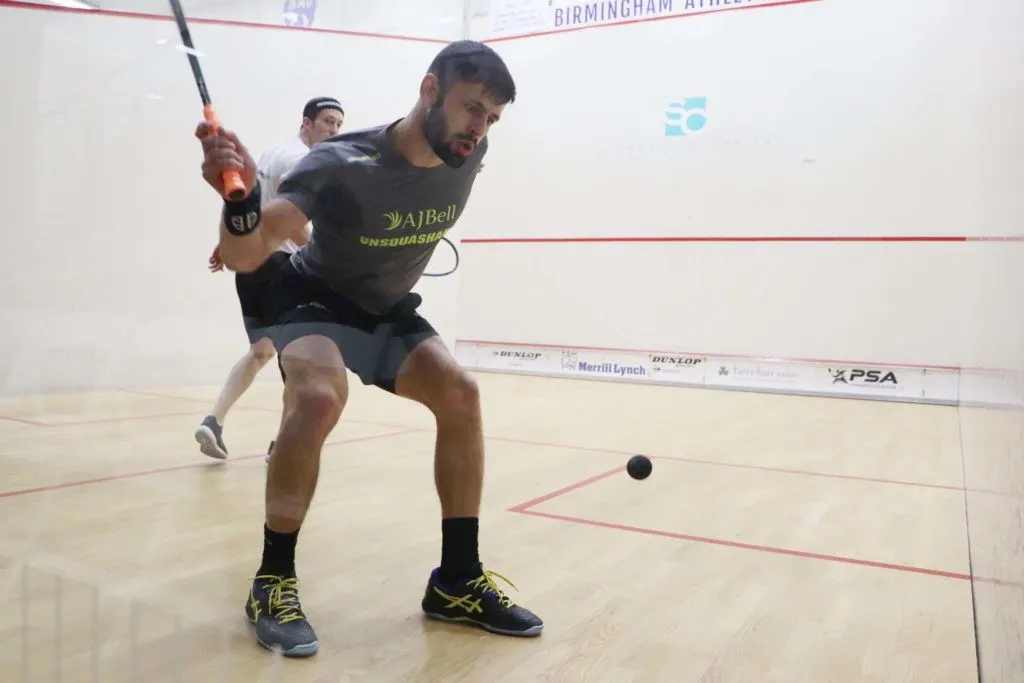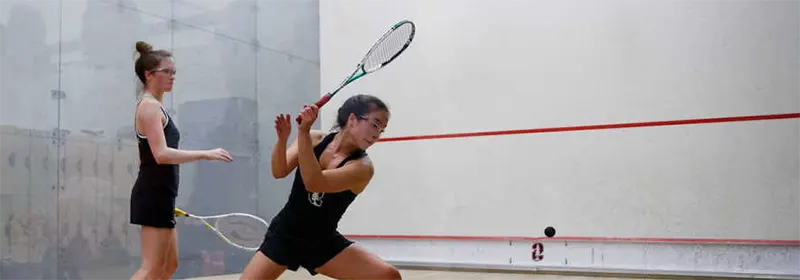21 June 2022 / 3-Min Read / Translate
The first thing to understand is that pros play squash for a living. That might sound obvious, and it is, but that means winning is not just about pride and glory, it’s about money. The more matches you win, the more money you win. So losing is bad, really bad. You don’t want to take many risks, and that’s why the ball is hit to the back more than amateur games.
They take fewer risks. If the attacking or probing shot is not really on, just wait until it is. Nobody won a tournament by going for nicks at every slightly lose ball. Well, maybe Ramy did, but he was special.

Each player is looking to create opportunities
It’s very easy for me to sit here and type the above paragraph, but you need the fitness to be able to wait for the right shot, and of course professional squash players are much, and I really do mean much, fitter than amateurs. Not just “fitter” in the general sense, but faster, stronger, more able to endure long, hard matches, more flexible and more mentally strong, which will lead us onto the next point in a moment.
The tempo that they play at might seem quite fast on TV or even when you watch live, but actually on court it’s unbelievable. But even pros can be made tired by hard rallying. The threat of hitting short makes each deep shot all the more effective.

Will it be a boast, drop, deep drive? Who knows until the last possible moment?
It’s not uncommon for a few pro matches to start quite close in the first and maybe even the second game, but then the constant pressure becomes too much for the weaker player and suddenly the match is over. Amateurs often think matches are won with nicks, and it’s true that those shots are the dramatic visual end of a rally, but the chances are that the situation has been created by the deep rallying earlier on.
Until you have been on court with somebody who hits fast, good length consistently, it is hard to fully understand how effective that tactics is. Each shot, just like each wave on the beach, might not feel particularly difficult to reach, but after a while you realize that you can’t hope for a weak return, at least not very often. Just like the waves, they keep coming and coming.
If I haven’t convinced you yet, then allow me to use another analogy. Deep drives to the back are like body punches in boxing. You don’t see a boxer knocked down very often with body shots, but they help drop the hands a little for the winning head shot, which of course is the one people remember and marvel at.
It’s the same with squash. You remember the nicks, but quickly forget the unglamorous deep drives that scrape the side wall and cause weaker returns. This tactic requires confidence in your drives and confidence in your fitness, which most amateurs don’t have.
How does this all help you? Well firstly, you need to improve your deep game. It requires either specific practice, i.e. conditioned games: Length Only at least once a week, or a gameplan that requires a minimum of 5 deep shots in every rally before you can attack a ball, even if there is an easy ball early on. This will build your fitness up over time, although I recommend you actually do specific fitness sessions to increase you endurance. High Intensity Interval Training is currently very popular and very good for your squash.
I am particularly fond of 3-minute rally sessions. Basically, you set a timer and rally for 3 minutes, even if the ball goes into the tin, or bounces twice – just keep going. After 3 minutes take a 15 second rest, just like the end of a normal rally. Sounds easy? Oh Boy! are you in for a shock! 3 minutes is a lot longer than you can ever imagine. If the game went to 11-8 that’s 20 points, so that’s 1 hour of playing! That’s tough. So, the 3-minute rallies are really good training. Start with 5 that take a 2 minute drink break.
High quality, consistent deep drives separate the advanced player from the club player, both physically & mentally. It’s boring but incredibly important!